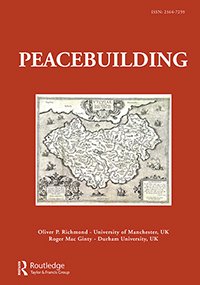By The International Crisis Group
Launched soon after they retook power in 2021, the Taliban’s campaign against narcotics has drastically reduced opium poppy cultivation and upended Afghanistan’s drug economy. Driven by ideology, the Taliban’s anti-drug efforts include rounding up drug users, eradicating crops, and shuttering drug bazaars. The Taliban’s enforcement impacts the livelihoods of millions of people, particularly poor labourers and rural women. Wealthy traders, meanwhile, are profiting from high prices by selling existing stocks. Many farmers have switched to crops such as wheat, but struggle with the reduced income. The ban’s future is uncertain; although the Taliban are adamant about implementing it, it could collapse under the weight of economic hardship. Foreign donors, who have much to gain from reduced drug production in Afghanistan, should harness the Taliban’s zeal for counter-narcotics and encourage licit economic growth. In the meantime, the Taliban should consider the welfare of the poorest farmers and implement a phased approach to the ban. Implemented with growing seriousness, the Taliban’s anti-narcotics campaign has profoundly affected a country that ranks among the world’s largest suppliers of illegal drugs. The main focus has been opium, a central part of Afghanistan’s agricultural sector. Enforcement began slowly, but has grown stricter. Taliban forces started with easy targets, herding drug users into jails and rehabilitation centres. They then warned farmers not to cultivate the opium poppies whose resin they have harvested for centuries. When that failed, the Taliban deployed fighters to face down villagers and destroy their crops. As a result, the UN estimates, cultivation declined by 95 per cent – more than any other counter-narcotics campaign in recent history. The Taliban also started to apply pressure on traffickers, despite the fact that some of them backed their movement for decades. More recently the de facto authorities shut down drug bazaars and arrested hundreds of dealers. While underworld kingpins and big landowners have thrived under the ban, reaping the benefits of skyrocketing prices by selling stockpiles, many farmers have suffered. By UN estimates, the halt to opium farming has affected the livelihoods of almost seven million people. These individuals are unlikely to find other work in a stagnant economy burdened with sanctions. Farmers have lost an estimated $1.3 billion annually, or 8 percent of GDP in 2023. Farm work remains the biggest source of employment for Afghan women. The ban has hit them especially hard, given their lack of opportunities under a Taliban regime that severely limits their ability to work. The economic shock has been compounded by the Taliban’s limited capacity to offer farmers and rural workers alternatives. Many switched to cultivating wheat or cotton, but struggle to make ends meet. Development of licit agriculture would require more irrigation, cold storage facilities and better roads. The Taliban does not have the budget to develop such infrastructure. Meanwhile, the opium price has soared, tempting farmers to flout the ban. So far, few dare to defy the Taliban. Farmers respect the ban most faithfully in the south, where the Taliban have many supporters, and where bigger farms produced stocks of opium that could be sold after the ban. Still, pockets of disobedience remain, even in the Taliban’s home province of Kandahar. In the smaller fields of the mountainous north and east, resistance is more widespread. While the Taliban’s measures have shaken the drug sector to its very foundations, the future of the ban remains in doubt. Some experts predict that its economic impact will force the Taliban to back track on a signature policy. Of course, it is also possible that the Taliban leadership will remain stubborn and steadfast. Foreign governments have a lot to gain from Afghanistan no longer flooding global markets with drugs. After the Taliban’s severe restrictions on women’s rights made the regime odious to much of the outside world, the narcotics ban offers a rare opportunity to work with the new authorities on a pressing issue to the benefit of all sides. The Taliban’s strategy of banning drugs without providing alternative jobs risks large-scale displacement of rural Afghans and rising emigration, along with growing desperation among the poor. Donors should support a transition toward licit and equitable growth in the economy, easing the acute poverty crisis the country currently faces. Some already give aid for food security and rehabilitation of drug users, but the assistance falls far short. Effective support at a national scale would require working with the Taliban regime, which is politically difficult and, for many Western policymakers, unpalatable. It would, however, aid Afghan civilians, especially rural women. In the first instance, support could focus on rural development, agricultural support, water conservation and investments in agro-processing. But the reality is that a drug-free agricultural sector will not provide enough jobs, so the country needs a development plan focusing more broadly on non-farm employment, including for women. Regional countries should support Afghanistan’s integration into transport networks and trade arrangements, for their own interests and to stabilise their neighbourhood. All of this will require time. Until the country makes the painful transition away from dependence on narcotics as a cash crop, the Taliban should show a bit of leni ency. Although it is unlikely it will backtrack on the ban, at a minimum the regime should halt more intrusive eradication practices such as house-to-house searches. Adopting more lenient practices such as turning a blind eye to small garden plots of poppy and cannabis would give the poorest farmers a better chance of survival in the coming years. Farmers selling tiny amounts of opium for prices hundreds of times higher than what is paid for other crops would give them a lifeline without jeopardising the ban’s overall objectives.
Report No. 340 Kabul/Brussels, International Crisis Group, 2024. 35p.











